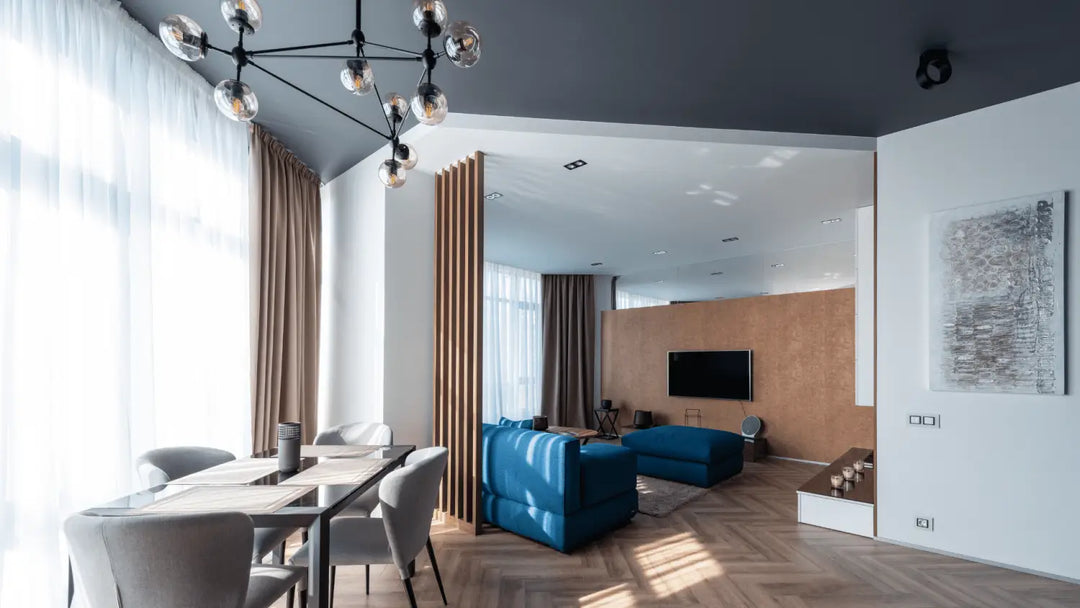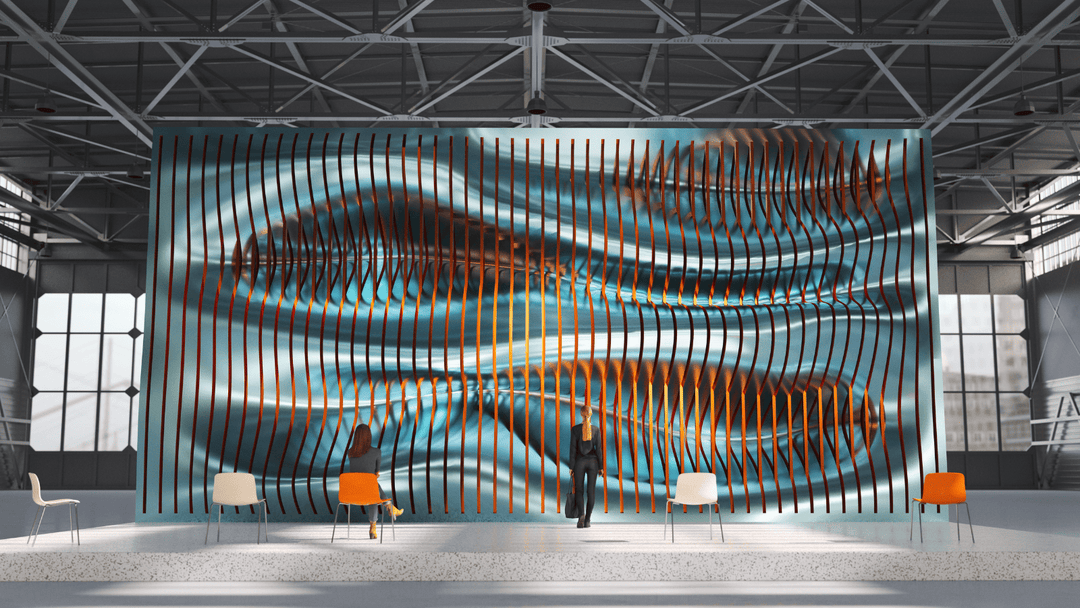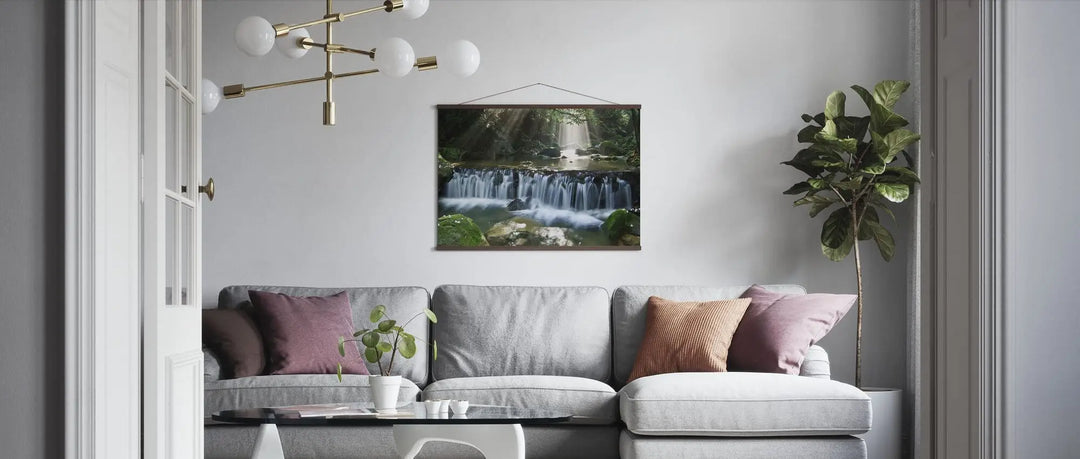Changing an LED bulb in a chandelier may seem simple, but there are some key steps to follow to ensure a safe and efficient replacement. Whether you're dealing with a traditional bulb or an integrated LED, this comprehensive guide will guide you through the process.
Understanding the Different Types of LED Bulbs
The characteristics of LED bulbs
LED bulbs offer a much longer lifespan than incandescent or halogen bulbs, thanks to their low energy consumption and luminous efficiency. They come in different forms, such as screw-in bulbs, bayonet-cap bulbs, and recessed spotlights.
Example : A 10-watt LED bulb can replace a 60-watt halogen bulb, providing equivalent light output while consuming much less energy.
Conventional bulb vs integrated LED
Unlike traditional light bulbs, integrated LEDs are not replaceable. They are an integral part of the light fixture. If a problem occurs, it may be necessary to replace the entire chandelier or call a professional for repair.
Tip : Check if your chandelier uses replaceable LED bulbs or an integrated LED system before you begin.
Steps to Safely Change an LED Bulb
Step 1: Turn off the power
Before any intervention, turn off the power at the electrical panel to avoid any risk of electrocution . Use a tester to check that the power is off.
Materials needed:
- An electrical tester to check for the absence of current.
- Insulated gloves to protect your hands.
Step 2: Remove the old bulb
- For a standard bulb: Gently unscrew or unclip the bulb by turning it counterclockwise.
- For a recessed spotlight without a rim: Use a suitable tool to remove the fixing and access the bulb.
Caution : If the bulb is still hot, wait until it cools before handling it.
Step 3: Choose the new LED bulb
Check the light output (in lumens), color temperature (in kelvins) and base type (E27, E14, GU10, etc.).
- Warm white (2700–3000 K): Ideal for a bedroom or living room.
- Cool white (4000–6500 K): Perfect for the kitchen or office.
Step 4: Install the new LED bulb
- Insert the new bulb into the socket, turning it slightly to secure it.
- Check that the bulb is properly seated and not tilted.
Step 5: Restore Power and Test
Turn the power back on at the electrical panel and turn on the switch. If the light doesn't work, check the connections or make sure the bulb is compatible with the chandelier.
Specific precautions for integrated LED bulbs
Integrated LED bulbs require a different procedure. If the LED is faulty, it may not be possible to replace it without disassembling the entire fixture. In this case, contact a professional electrical installer to avoid damaging your chandelier .
Solve Common Problems with LED Bulbs
What to do if the LED bulb is flashing?
A flashing light may indicate a dimmer incompatibility or a voltage issue. Check the compatibility of your new LED bulb with your system.
Why doesn't the LED bulb light up?
Make sure that:
- The bulb is properly secured in the socket.
- The chandelier's electrical cables are not damaged.
Helpful Tip : Use an electrical tester to check the voltage at the socket.
Benefits of LED bulbs for your chandelier
- Low consumption: LEDs consume approximately 80% less energy than incandescent lamps.
- Long lifespan: Up to 25,000 hours of lighting, compared to 1,000 hours for a conventional bulb.
- Adjustable lighting: Choose a color temperature suited to each room in the house (bedroom, kitchen, office).
- Savings on the bill: A significant reduction in electricity costs thanks to their energy efficiency.
Conclusion
With the right tools and precautions, changing an LED bulb in a chandelier is a quick and safe task. If you encounter any difficulties, don't hesitate to consult an electrical professional or ask for help on a specialized forum . Take this opportunity to modernize your lighting and reduce your energy consumption with LED bulbs!
Frequently Asked Questions
1. How to safely change an LED bulb on a chandelier?
To replace an LED bulb in a chandelier while ensuring your safety, follow these essential steps:
- Turn off the power at the switchboard to avoid any electrical hazards. If your chandelier is equipped with a transformer, make sure it is also disconnected.
- Allow the bulb to cool if it was lit. Although LEDs produce less heat than a halogen bulb, they can be hot.
- Use a stable stepladder suitable for the height of the ceiling light or pendant light.
- Unscrew the old bulb: Turn gently counterclockwise (or a quarter turn for bayonet bulbs).
- Check the base (E27, E14, GU10) to choose a compatible LED bulb. LED bulbs come in various sizes and models, so make sure the replacement meets the specifications.
- Screw in the new LED bulb and turn the power back on to test the installation.
2. What type of LED bulb is suitable for my chandelier?
The choice of LED bulb depends on the following criteria:
- Base: Identify whether your light fixture uses a screw base (E27 or E14), a spotlight bulb (GU10 or G9), or another type.
- Light output: A low power (5W LED) can replace a traditional 40W bulb thanks to a better ratio between power consumption and light intensity.
- Color temperature:
- Warm white (2700K-3000K): For a warm atmosphere in a living room or bedroom.
- Daylight (4000K-5000K): Ideal for kitchens or offices.
- Model: Modern chandeliers sometimes require integrated LED bulbs or specific versions suitable for LED strips or pendants.
Check the bulb packaging or chandelier manual to verify compatibility.
3. Can I replace a halogen bulb with an LED in my chandelier?
Yes, replacing a halogen lamp with an LED bulb is possible and recommended to reduce energy consumption and increase lifespan . Here are some points to consider:
- Compatibility with the transformer: Some older luminaires equipped with a transformer require verification before changing.
- Base type: If the base is the same (e.g. GU10), installing an LED is easy.
- Light Equivalence: A 7W LED bulb produces the same light as a 50W halogen bulb.
- Flickering: Make sure you use the correct bulb for your system to avoid this common problem.
4. Why is my LED bulb flickering after installation?
LED bulb flickering can be caused by several factors:
- Dimmer Compatibility: If your chandelier has a dimmer, check that the LED bulb is compatible.
- Unstable power supply: A wiring problem or an unsuitable transformer may cause flashing.
- Defective LED bulb: Replace it to see if the problem persists.
- Residual current: Some ultra-sensitive LED lamps react to minor current leaks.
5. What precautions should be taken when changing an integrated LED bulb?
An integrated LED bulb requires special precautions because it is fixed in the light fixture. Here's how to proceed:
- Turn off the power supply to work safely.
- Identify the type of LED module (e.g., LED spotlight without rim or ceiling light with integrated bulb).
- Disassemble the fastener by removing the screws or protective covers.
- Install the new bulb or replace the entire module if necessary.
This type of LED lighting guarantees a long lifespan, but may require specific tools such as a screwdriver or non-slip gloves.
6. What is the average cost of an LED chandelier bulb?
The price of LED bulbs varies depending on:
- Light output: A low-power LED bulb costs between €5 and €10, while a more efficient bulb can cost up to €20.
- Model and base: GU10 or E14 models are generally more affordable than integrated LED bulbs.
- Lifespan: A long life LED (25,000 hours) may be slightly more expensive.
7. How to avoid breaking an LED bulb when replacing it?
To avoid breaking an LED bulb when replacing it:
- Use gloves: This reduces the risk of slipping or breaking.
- Turn gently in the correct direction (often counterclockwise to unscrew).
- Hold the base firmly, especially if the bulb is slippery.
- Work in a clear area to avoid shocks.
If the bulb breaks, turn off the power immediately and use a tool to safely remove the fragments.
8. Can you use any LED on an antique chandelier?
No, antique chandeliers require checks before switching to LED bulbs:
- Socket Compatibility: Make sure the LED bulb matches the socket type.
- Presence of a transformer: Some old chandeliers may not be compatible without adaptation.
- Light type: Choose a warm light to maintain the retro charm of classic lighting.
If in doubt, consult a professional electrician.
9. How long does an LED bulb last on a chandelier?
LED bulbs have an average lifespan of 15,000 to 25,000 hours , or about 10 years of normal use. This depends on:
- Bulb quality: High-quality LED bulbs last longer.
- Conditions of use: Overheating or current fluctuations may reduce longevity.
- Switch-on frequency: LEDs last longer than halogen lamps, even if they are switched on and off frequently.
10. What are the advantages of LED bulbs for chandeliers?
LED bulbs have many advantages over traditional models:
- Energy saving: LEDs consume up to 80% less energy than halogen lamps.
- Extended lifespan: They last on average 10 times longer.
- Various color availability: Options in warm white, daylight or cool white.
- Heat Reduction: Unlike incandescent bulbs, they remain cool to the touch.
- Compatibility with modern dimmers: Some LEDs allow you to adjust the light intensity.




























Leave a comment